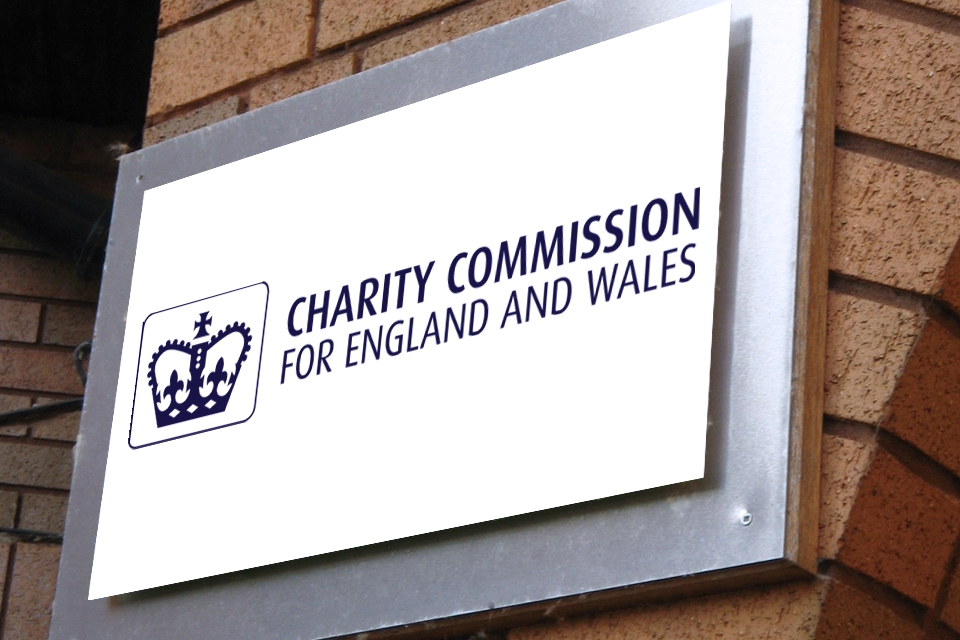It’s common to think about the different risks that come with investing. Most people are aware of usual risks like market fluctuations, inflation, and even the loss of capital. However, one of the most important risks is often overlooked poor return.
This isn’t about losing your initial investment outright. Instead, it’s about your investments failing to grow enough to achieve your financial goals. Over time, this can erode your purchasing power and compromise your financial freedom.
This is why simply investing isn’t enough. You need to understand where your money is invested and ensure its allocation aligns with your risk profile, financial timeframe and objectives. This article aims to demonstrate why ensuring you have an understanding and confidence of where your money is invested is crucial to achieving your financial goals, and failure to do this can have a detrimental impact.
Understanding where you are invested asset classes
At the core of every investment portfolio are asset classes. These are broad categories of investments that share similar characteristics. The most common asset classes typically include
- Equities (Stocks) these represent ownership stakes in companies. When you buy a stock, you own a tiny piece of that company. Their value can rise or fall based on company performance, industry trends, and overall market sentiment.
- Fixed Income (Bonds) essentially, bonds are loans to governments or corporations. When you buy a bond, you’re lending money in exchange for regular interest payments and the return of your principal at maturity.
- Cash and Cash Equivalents these are highly liquid, short-term investments like savings accounts, money market funds, or Treasury bills. They can offer stability and easy access but generally provide the lowest returns.
- Commodities these are raw materials like gold, oil, or agricultural products, often used as inflation hedges or diversification tools.
Each asset class behaves differently under varying economic conditions, offers a distinct risk-return profile, and plays a role in a well-constructed portfolio.
- Growth Potential equities generally offer the highest long-term growth potential, making them crucial for long-term goals like retirement. However, this also comes with capital risk.
- Income Generation bonds primarily provide a steady stream of income through interest (coupon) payments, suitable for those seeking regular payouts.
- Stability and Capital Preservation cash and high-quality bonds are typically used to preserve capital and provide stability, especially as you get closer to needing your money. However, inflation may erode the value of capital over time.
- Diversification different asset classes often move independently of each other. When one performs poorly, another might perform well. Combining them helps smooth out overall portfolio returns and reduce overall risk. For example, during times of market stress, bonds might hold their value better than stocks.
Understanding the inherent characteristics of these asset classes is the first step in building a portfolio that truly reflects your financial goals, risk tolerance, and time horizon. Without this fundamental comprehension, you risk being misallocated, which directly leads to the risk of poor return.
Applying this in an example
To truly grasp the risk of poor return, let’s look at an example that highlights the fundamental difference between common asset classes. Let’s take the Moneyfarm P1 portfolio which is invested 100% in bonds, vs the Moneyfarm P7 portfolio which is invested 100% in equities. This is assuming a single lump sum investment, with no regular contributions. Since 2017 the performance of these portfolios is as follows
A common misconception is that bonds are always safer because they’re less volatile. And in the short term, that’s generally true. Bonds offer stability and are typically considered lower risk, making them suitable for shorter-term goals or for investors who are close to needing their capital. However, this stability comes at a cost, and as seen above, less potential for return over the longer term. Over decades, the returns from bonds often struggle to keep pace with inflation, meaning your purchasing power could actually diminish over time.
On the flip side, equities (stocks) are subject to short-term volatility. The stock market can move up and down on a daily basis. However, over the longer term, equities have historically provided significantly more potential for growth. While you’ll experience more swings along the way, the risk of genuinely poor returns from a diversified equity portfolio over, say, 10, 20, or 30 years is minimal compared to bonds. Equities can be the engine of long-term wealth creation.
Geographical and sector composition
Beyond basic equities and bonds, minimising the risk of poor return also depends on your portfolio’s geographical and sector (industry) allocation. This is a far more intricate challenge, as countless interconnected factors, from geopolitical shifts and technological advancements to consumer trends and regulatory changes, constantly influence market performance across different regions and industries.
Higher exposure to one area can lead to strong returns in one period, but poor returns in another, as market conditions constantly shift. Therefore, confidence in your investment manager and their approach to managing these market shifts is crucial. Their ability to adapt your portfolio to the ever-changing global landscape is key to mitigating the risk of poor return.
This is precisely where Moneyfarm excels. Our expert team doesn’t just manage your broad asset allocation, within our managed portfolios we take a deep dive into the specifics of your portfolio’s geographical and sector exposures. We continuously analyse the global economic landscape and market trends, translating these complex dynamics into clear insights. We’ll explain our views on the potential impact these allocations may have on your investments, ensuring your portfolio is strategically positioned to navigate evolving conditions and optimised for your long-term goals.
How investment fees impact your returns
In addition to asset class, geographical, and sector allocation, fees are another key factor in minimising the risk of poor return. The fees charged by a provider essentially work against any investment growth you achieve and will play a huge factor in the size of your portfolio over the longer term.
Even small fees impact returns significantly. An initial £100,000 investment at 7% annual return over 30 years would reach £761,000 with no fees. However, a 1% annual fee reduces this to £575,000, a reduction of over £186,000. This illustrates how seemingly minor percentages drastically erode wealth, transferring potential gains to intermediaries.
Let’s consider a real-world example. With Moneyfarm, a £250,000 investment in our actively managed portfolios would have an active management fee of 0.4% a year, an underlying fund fee of 0.15% a year, and a market fee of 0.1%. This totals 0.65% per year. Now, let’s consider the same investment with a more expensive provider, charging 2% per year for a similar fund.
The above performance chart shows the performance of P7 portfolio since 2017, and this is before charges. To get an accurate gauge of the charges you would need to deduct the yearly charge amount from the yearly performance. The annual average performance of the P7 has been around 16.07% per annum, deducting the annual Moneyfarm charge leaves the net return as 15.43%.
On the other hand, for our more expensive provider, we would need to deduct 2% from the yearly return, leaving the net return as 14.07%, a notable difference which can ultimately cost you thousands of pounds when extrapolated over the long term.
Therefore, it is crucial to ensure you know where you are invested and what charges are being levied, as high charges can contribute substantially to the risk of poor return.
Don’t let your pension(s) go under the radar
The unfortunate truth is that many pensions, particularly employer schemes, often go overlooked. They become out of sight, out of mind. This complacency can be costly, as many of these generic funds are quietly underperforming, eaten away not only by unsuitable asset allocations but also by excessive fees, compounding the risk of poor return without you even knowing it.
Your pension is likely one of your largest assets. Don’t let it be a victim of the risk of poor return. Take the time to understand exactly what you’re invested in, how much you’re paying in fees, ensure it aligns with your long-term goals, and consider whether a more tailored and actively managed approach might be better suited to secure your financial future. For somebody in their 20s, 30s or even 40s, retirement is at least 20 years away. Having any exposure to bonds can be detrimental for such a long time horizon, and as seen below, the majority of default retirement funds do have bonds in them, which have underperformed compared to equities over the long term.
Many employer Pension schemes are invested in a “one-size-fits-all” approach. Schemes will default members into a generic medium risk pension fund with perhaps a higher composition of bonds for stability, which will not take into account an investor’s individual circumstances and goals.
Now, for someone with a medium-term timeframe, perhaps just a few years from retirement, or someone already drawing down their pension income, a medium risk asset allocation might be perfectly suitable. The bond component provides stability as they approach or enter retirement.
However, for a younger employee with a longer-term timeframe (say, 7+ years until retirement), this higher composition of bonds will most likely be detrimental, thus highlighting the risk of poor return. By playing it safe with too many bonds, you could be sacrificing years of potential growth that equities could provide. This ultimately leads to a smaller pension pot and, consequently, reduced spending capacity in retirement.
The chart below shows the performance of Portfolio 7 (our highest equity allocation) compared to the default investment funds used by several large workplace pension schemes Aegon, NEST, The People’s Pension, and NOW Pensions, over the period from 01 May 2018 to 23 June 2025. Performance figures are shown net of ongoing charges.
Many workplace pension schemes use a default investment fund for members who do not make an active investment choice. These default options are typically designed for a broad audience and may have a more balanced or cautious asset allocation — for example, holding a higher proportion of bonds to reduce volatility.
This approach can make sense for some investors as mentioned above, but as also mentioned, for those with a longer investment horizon and a higher tolerance for risk, a more growth-focused portfolio, such as the Moneyfarm P7, may be more suitable
Therefore, ensuring you take control of your investment strategies at an early stage is key to mitigating the risk of poor return as soon as possible and ensuring that the funds are invested in a way that you know is appropriate for you.
How Moneyfarm can help
We hope this article has inspired you to review your investments, pensions, ISAs, and other assets to ensure you have a good grasp of how they are invested and whether this is appropriate for you and your objectives. While this article provides a brief summary of what may be best for you, we always recommend having an expert review your portfolios, and this is something we at Moneyfarm can do for you. If you have any external investments you would like us to provide a detailed breakdown of, we can certainly do this and review them against your individual goals, timeframe, and objectives.
Sign in to your Moneyfarm account to explore all our investment options and find the one that fits your goals.
By making an investment, your capital is at risk. Past performance is no indicator of future performance. The tax treatment of investments and pension depends on your individual circumstances and may be subject to change in the future. You should seek financial advice if you are unsure about investing.
*As with all investing, financial instruments involve inherent risks, including loss of capital, market fluctuations and liquidity risk. Past performance is no guarantee of future results. It is important to consider your risk tolerance and investment objectives before proceeding.








